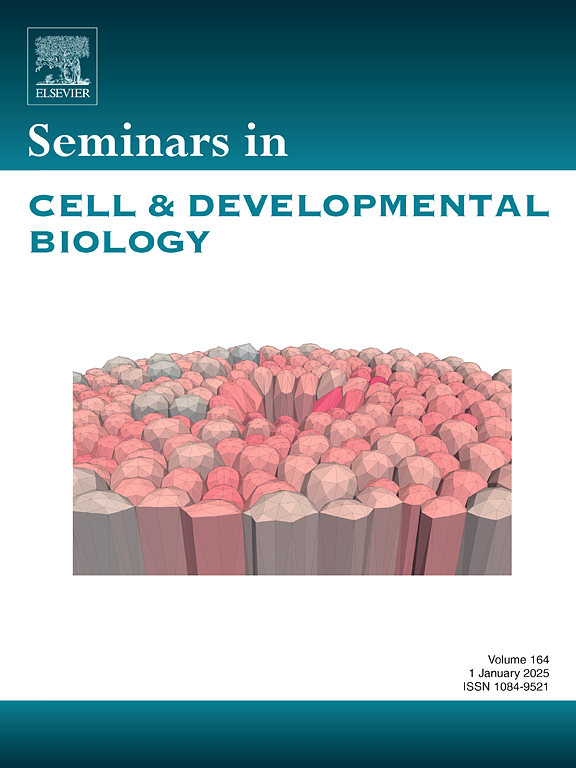梯度,波和向列:再生的定量观点
IF 6
2区 生物学
Q1 CELL BIOLOGY
引用次数: 0
摘要
再生将身体受损部位恢复到原来的大小、形状和结构。过去几十年的研究发现,信号通路、细胞类型和细胞过程是再生的关键。此外,机械线索和电势在调节再生过程中越来越多地涉及。一个有趣的开放性问题是,这些化学、机械和电子信号是如何动态组织的,以协调大型再生组织和长再生时间尺度的细胞行为,以实现适当的形态发生。此外,当组织达到合适的最终形态时,再生是如何停止的,这方面的研究较少。这些问题和相关模型与信息、模式形成、自组织和控制等物理概念相互作用。结合发育生物学和物理学的方法和概念的跨学科方法为这些问题提供了新的定量见解。在这种方法中,研究人员描述了化学、机械和电信号输入的空间组织和时间动态,并将它们与细胞和组织行为联系起来。最初的观察为理论提供信息;反过来,理论指导实验和数据分析,而最先进的扰动允许测试这些模型。在说明了这种方法之后,我们提供了它在动物体内再生中的应用实例。这些工作扩展了“形态发生”的概念,有助于建立定量再生的新兴领域和揭示多细胞组织的原理。本文章由计算机程序翻译,如有差异,请以英文原文为准。
Gradients, waves and nematics: quantitative perspectives on regeneration
Regeneration restores a damaged body part to its original size, shape and structure. Research over the last decades identified signaling pathways, cell types and cellular processes that are key for regeneration. Moreover, mechanical cues and electric potentials are increasingly implicated in modulating regenerative processes. An intriguing open question regards how these chemical, mechanical and electric signals are dynamically organized to coordinate cell behaviors across large regenerating tissues and long regenerative timescales for proper morphogenesis. In addition, it is less explored how regeneration is stopped once tissues reach their proper final form. These questions and related models cross-talk with physical notions like information, pattern formation, self-organization, and control. An interdisciplinary approach combining methods and concepts of developmental biology and physics is offering new quantitative insights on these questions. In this approach, researchers characterize the spatial organization and temporal dynamics of chemical, mechanical and electric signal inputs and relate them to cell and tissue behaviors. Initial observations inform theory; in turn, theory guides experiments and data analysis, while state-of-the-art perturbations allow testing these models. After illustrating this approach, we provide examples of its application to animal regeneration in vivo. These works are extending the notion of “morphogen”, contributing to establishing the emerging field of quantitative regeneration and uncovering principles of multicellular organization.
求助全文
通过发布文献求助,成功后即可免费获取论文全文。
去求助
来源期刊
CiteScore
15.10
自引率
1.40%
发文量
310
审稿时长
9.1 weeks
期刊介绍:
Seminars in Cell and Developmental Biology is a review journal dedicated to keeping scientists informed of developments in the field of molecular cell and developmental biology, on a topic by topic basis. Each issue is thematic in approach, devoted to an important topic of interest to cell and developmental biologists, focusing on the latest advances and their specific implications.
The aim of each issue is to provide a coordinated, readable, and lively review of a selected area, published rapidly to ensure currency.

 求助内容:
求助内容: 应助结果提醒方式:
应助结果提醒方式:


